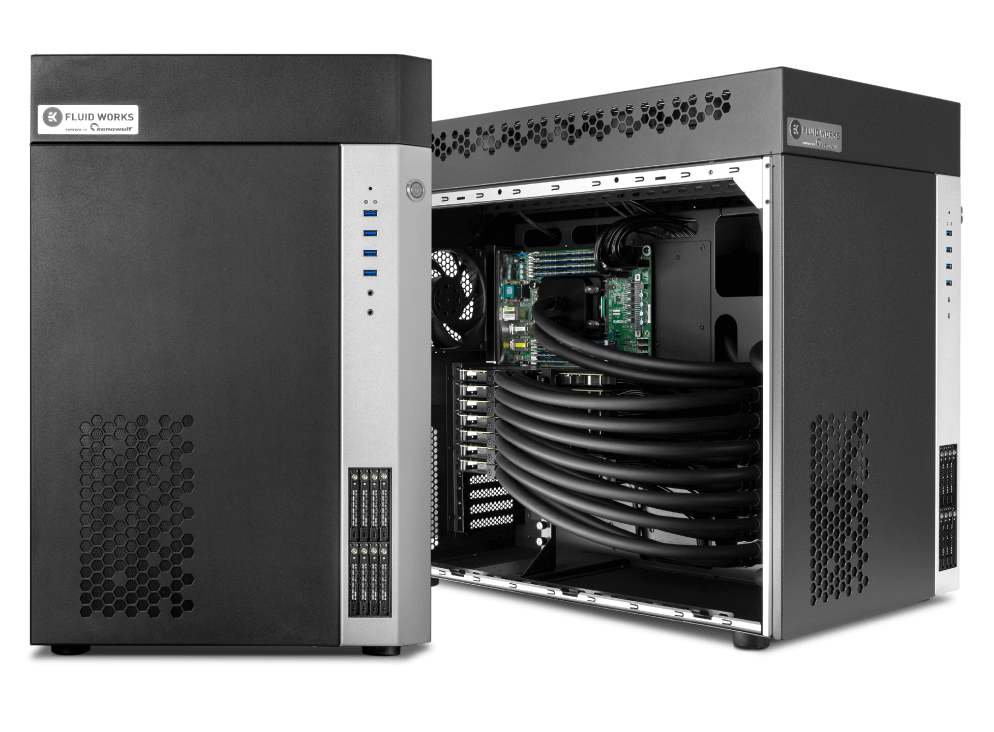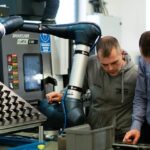The Role of GPUs in Machine Learning Workstations: Why You Need One
Graphics Processing Units (GPUs) are essential in the machine learning workstation. They handle complex computations efficiently. This speeds up tasks significantly.
Machine learning models often require immense processing power. GPUs enable faster training of these models. This leads to quicker iteration and improved results.
In this blog post, we will discuss the roles of GPUs in the machine learning workstation and why you need one.
Parallel Processing Capabilities of GPUs
Graphics Processing Units excel at parallel processing. This means they can handle many tasks at once. In a workstation for deep learning, this speed is crucial.
GPUs break down big problems into smaller ones. They solve all the small problems at the same time. This makes training machine learning models much faster.
Because of this, machine learning workstations can do more in less time. This leads to better and quicker results. Using GPUs, scientists and engineers can create smarter AI models.

Speeding Up Model Training
Training machine learning models can be very slow. With a deep learning workstation, the process is much faster. This saves a lot of time and effort.
GPUs help speed up training by working on many tasks at once. They break big problems into smaller ones and solve them quickly. This makes the whole process more efficient.
Fast training times allow for more experiments and better results. Models can be tested and improved much quicker. Using a deep learning workstation helps achieve these goals.
GPU Memory for Handling Large Datasets
GPU memory is vital for managing large datasets. A workstation for deep learning requires ample memory. This ensures that the data loads quickly and processes efficiently.
High GPU memory leads to faster computations. It offers unparalleled performance and capabilities. Scientists and engineers can work on more complex models without delays.
More memory means handling bigger datasets. This allows for more accurate machine learning models. Large datasets lead to better training and smarter AI solutions.
Compatibility with Popular Machine Learning Frameworks
GPUs are compatible with many machine learning frameworks. Frameworks like TensorFlow and PyTorch work well with GPUs. This makes it easy to build and train models.
Using GPUs boosts the performance of these frameworks. It speeds up both training and inference tasks. This leads to quicker and better results.
Most frameworks come with GPU support out of the box. This reduces the setup time for machine learning projects. Developers can start working on AI models right away.

Scalability in Machine Learning Projects
Scalability is vital for machine learning projects. This means your system can handle more work. This is important as data keeps growing.
Machine learning projects often start small. As they grow, they need more computing power. GPUs help scale projects by handling bigger workloads.
Projects that scale well are more successful. They can adapt to new challenges with ease. This ensures they stay useful over time.
Energy Efficiency of GPUs
Energy efficiency is a key benefit of GPUs. They use less power for complex tasks. This makes them ideal for machine learning workstations.
Efficient energy use saves money. It also reduces the environmental impact. This is important for both businesses and researchers.
Lower energy use means less heat. This keeps workstations cool and running well. Efficient GPUs improve both performance and longevity.
Cost-Effectiveness in the Long Run
Cost-effectiveness in the long run is crucial for machine learning projects. GPUs might seem expensive at first glance. However, their long-term savings surpass the initial cost.
GPUs enable faster computations, saving time and resources. Precision AI models require fewer iterations, reducing labor costs. This efficiency means more savings over time.
Investing in deep learning workstations with GPUs is a smart choice. It leads to better and faster results, making it a worthwhile investment.

Future Trends in GPU Utilization for Machine Learning
The future of GPUs in machine learning looks very promising. New advances in GPU technology are happening fast. These improvements will make model training even quicker and more efficient.
With more power, GPUs will handle much larger datasets easily. This will let scientists train even more complex AI models. It means better solutions for real-world problems.
We can expect GPUs to become more energy-efficient too. This will reduce costs and help the environment. This ensures that future machine learning workstations remain sustainable and powerful.
Enhanced AI Model Prediction Accuracy
Enhanced AI model prediction accuracy is critical for reliable results. Accurate models are better at understanding patterns in data. This leads to more useful and precise outcomes.
Many factors contribute to improved accuracy in AI models. One key factor is high-quality data. Clean and well-labeled data helps the model learn better and make fewer errors.
Using GPUs also boosts accuracy. Fast processing power allows for more training cycles. This helps the model learn and improve over time.
Integration with Edge Computing
Edge computing brings data processing closer to where it is needed. This reduces delays in data transfer. Integration with GPUs makes this process even faster.
GPUs enhance edge computing by speeding up complex tasks. They allow for quick real-time data analysis. This improves decision-making and efficiency in various applications.
Combining edge computing with GPUs is beneficial for AI models. It helps in handling and analyzing large datasets quickly. This leads to smarter and more accurate AI solutions.

Leveraging GPU Cloud Services
Leveraging GPU cloud services offers great benefits for machine learning projects. These services provide access to powerful GPUs online. This means no need for expensive hardware setup.
GPU cloud services are very flexible. You can scale up or down based on your project’s needs. This helps manage costs and resources better.
These services also make collaboration easier. Teams can work on the same project from different locations. This speeds up development and improves results.
Final Thoughts on the Importance of a Machine Learning Workstation
A machine learning workstation is essential for modern AI projects. It offers the power needed for quick and efficient training. With the right setup, your models will perform better.
Using GPUs on your workstation speeds up tasks. It also allows for handling larger datasets. Investing in a good workstation leads to smarter and more accurate AI solutions.
Want to read some more informative articles like this one? Poke around on the rest of our blog to see what interests you.







